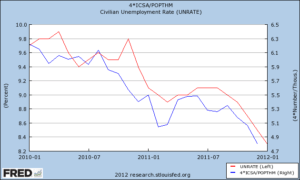Career Advice for Job Seekers
Economic Indicators Indicate Job Market About to Boom
The economy still has a long, long way to go before we will recover all of the jobs lost during the recession but the past few months are enough to convince all but the most irrational skeptic that we’re moving in the correct direction. Slowly, but better.
But those who are excited about the economy adding a couple of hundred thousand jobs per month need to keep in mind that if we continue to add jobs at that rate then it will take a decade to make up all for all the jobs lost toward the end of George W. Bush’s presidency as well as at the beginning of Barack Obama’s as the job losses were so monumental (750,000 some months) and the nation’s population has grown since the recession started in 2007. Looking back at job growth in the 1980’s or latter part of the 1990’s, we see that job growth of 250,000 per month is relatively weak. To actually increase the number of jobs we have in real terms, we need to start seeing monthly net jobs increase by at least 300,000 and even 400,000. Unlikely? Hardly.
The civilian unemployment rate has fallen from almost 10 percent a couple of years ago to just over eight percent today. That’s obviously a good thing but not good enough.
In order to get the employment numbers back to where they were before the recession, we need a lot more jobs and a lot less unemployed workers. Fortunately, it appears both are just around the corner. As detailed by The Bonddad Blog, three things need to happen before we get the necessary job growth back:
- During recessions there is typically a steeper loss in hours than in the number of jobs. During recoveries, initially hours increase faster until they make up the difference, and thereafter the two series move in tandem. Currently, hours are increasing faster than the number of jobs in the economy as a whole, they’ve already caught up in the private sector, and they’re only a few months away from catching up in the public sector.
- There are various types of employment surveys. The establishment surveys look to employers and their payroll processing companies to find out how many people they’re employing. These surveys tend to under count the actual number of people employed as they over emphasize the number of people who work for large organizations and organizations which use payroll companies. Small employers typically process payroll by hand so aren’t included in these reports, yet those employers are typically the ones who hire more people as economies come out of recessions. A better way of measuring how many people are employed is to actually ask households how many members of the household are employed. As shown by Bonddad, “the household survey has been on a tear for the last seven months, adding 2.252 million jobs, or over 320,000 a month, during that time.”
- The construction industry appears poised to boom again due to the recent, huge increase in the number of permits granted.
Are we out of the woodwork yet? No way. But should we feel confident that we’re well into the economic recovery and about to see significant acceleration? Definitely.
New Job Postings
Advanced Search